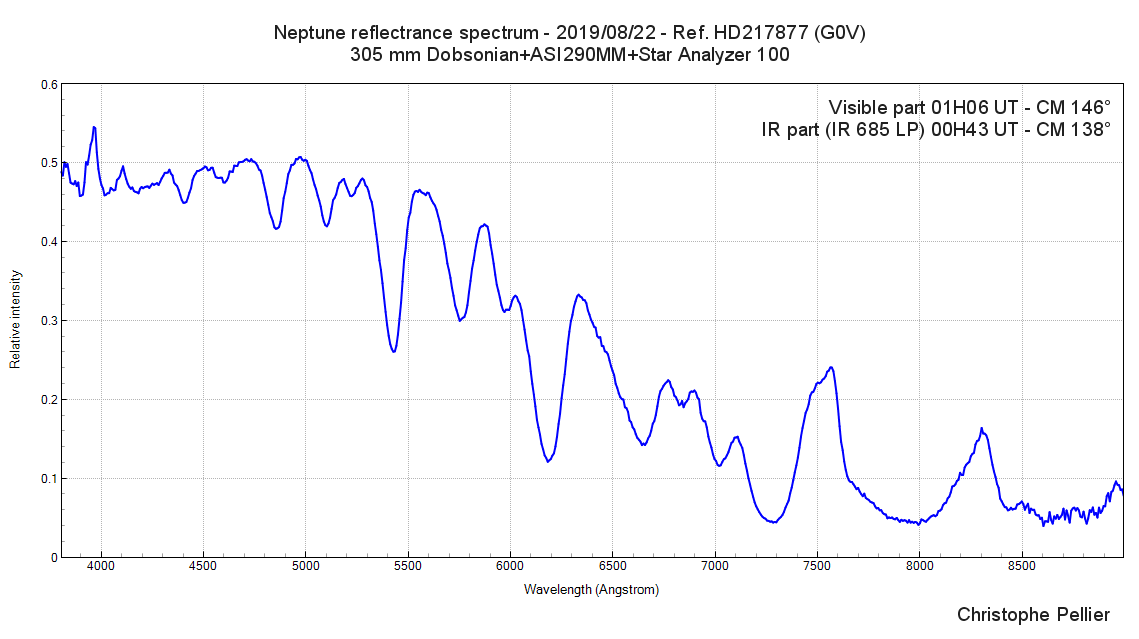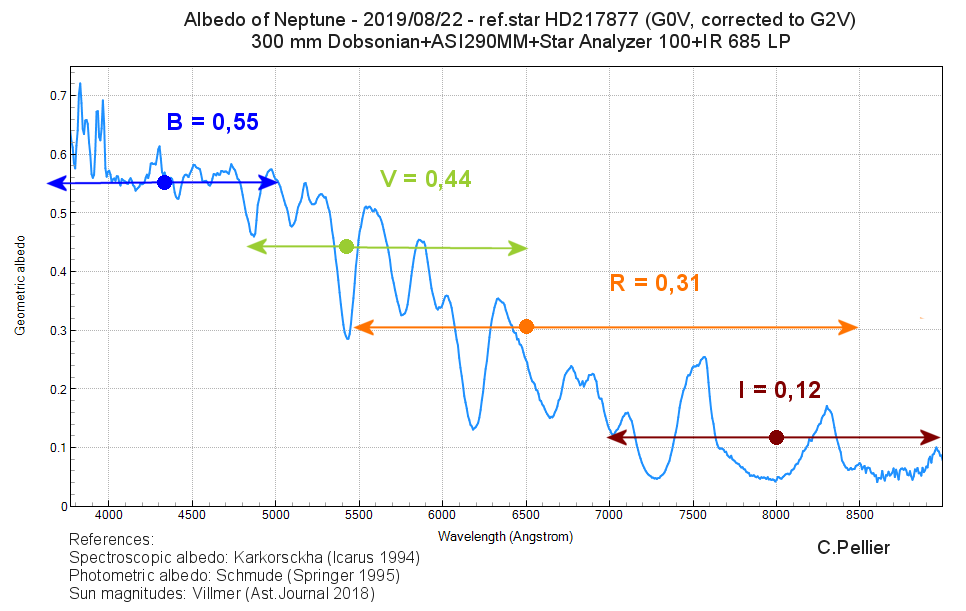| Neptune spectroscopy and photometry 2019/08/22 by Christophe.P |
Here are spectroscopic and photometric results on Neptune. This is the first run of three I have done near opposition. Results are: 1) A reflectance spectrum, calculated with a nearby G0V star 2) A colour spectrum, calculated in flux with a normalized magnitude (planet at 1 AU from Sun, and 1 AU from Earth) 3) Photometric UBVRI magnitudes, with normalized magnitudes. I have recently modified my synthetic filters to make them more in coherence with the Bessel curves. Colour coefficients have been recalculated, and re-tested on various variable stars, and the results are more accurate than with my previous filters and coefficients. The results obtained on Neptune look: - In good coherence with the published ALPO/R.Schmude data for B and V, with especially the expected B-V of +0,4 - Maybe sligthly off for R and I in comparison with the same data, at least judging from the normalized magnitudes. R and I are working fine on stars though. - Not far from published U values (+8,2/+8,3) but this is maybe just the luck! The next two runs have been taken with an additional 3,8° prism to correct the chromatic coma of the Star Analyzer. The spectra will be more precise, but I need to re-observe stars to calculate new coefficients before making photometry again.

This is a last result from my observations of Neptune on August 22nd. For planetary spectroscopy, it is interesting to calculate the albedo of the body, i.e. the relative amount of reflected sunlight. Everything is described in this page: http://www.astrosurf.com/pellier/spectro_albedo.html To summarize, the spectroscopic albedo has been calculated following the methode described in Erich Karkoschka's observations during the mid 1990's, with some personal adjustment (mainly, the spectrum of the G0V reference star has been corrected so its profile matches that of the Sun) The photometric albedos are calculated following Richard Schmude's book "Uranus, Neptune, Pluto and how to observe them". The albedo spectrum matches Karkoschka's results, except in the 600 to 700 nm range, where it looks noticeably fainter: but this appears to be an artefact due to the chromatic coma of the Star Analyzer (the spectrum is focused in the blue/green part). Being derived from the normalized magnitudes, the B and V photometric albedos are coherent with the data previously published by the ALPO, but are found to be higher in R and I again.

ALPO-Japan Latest
Neptune Section